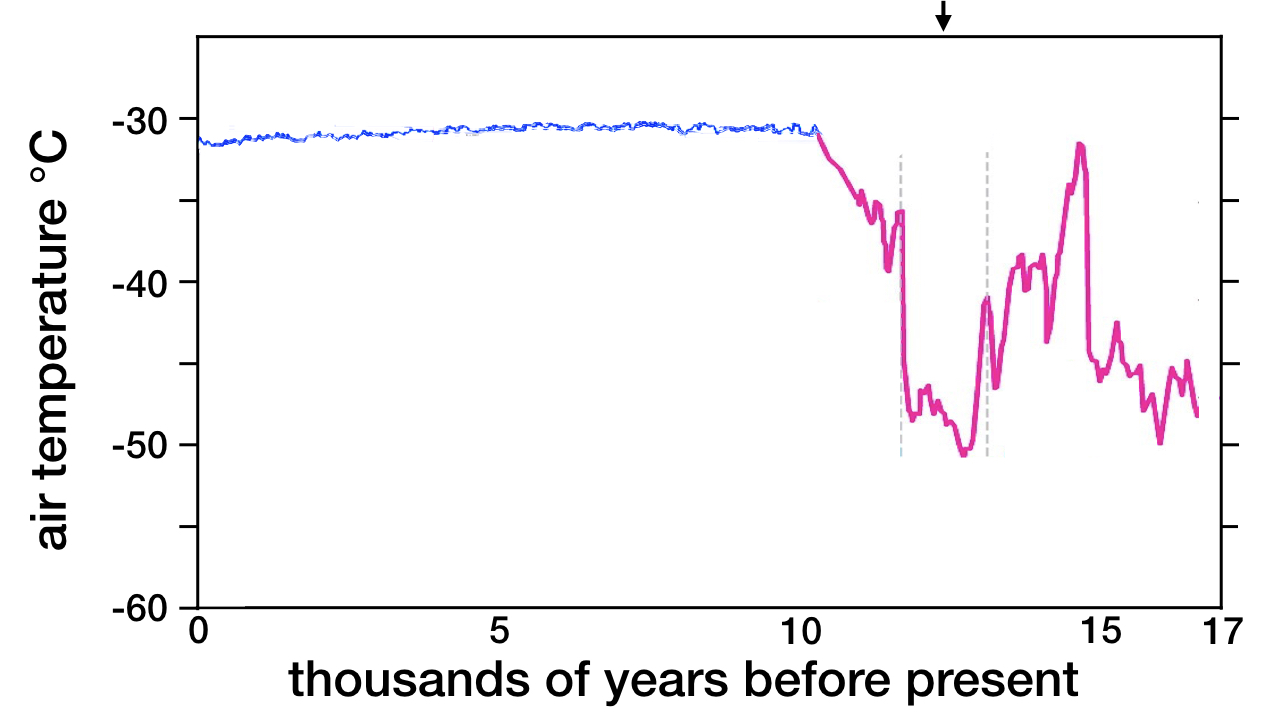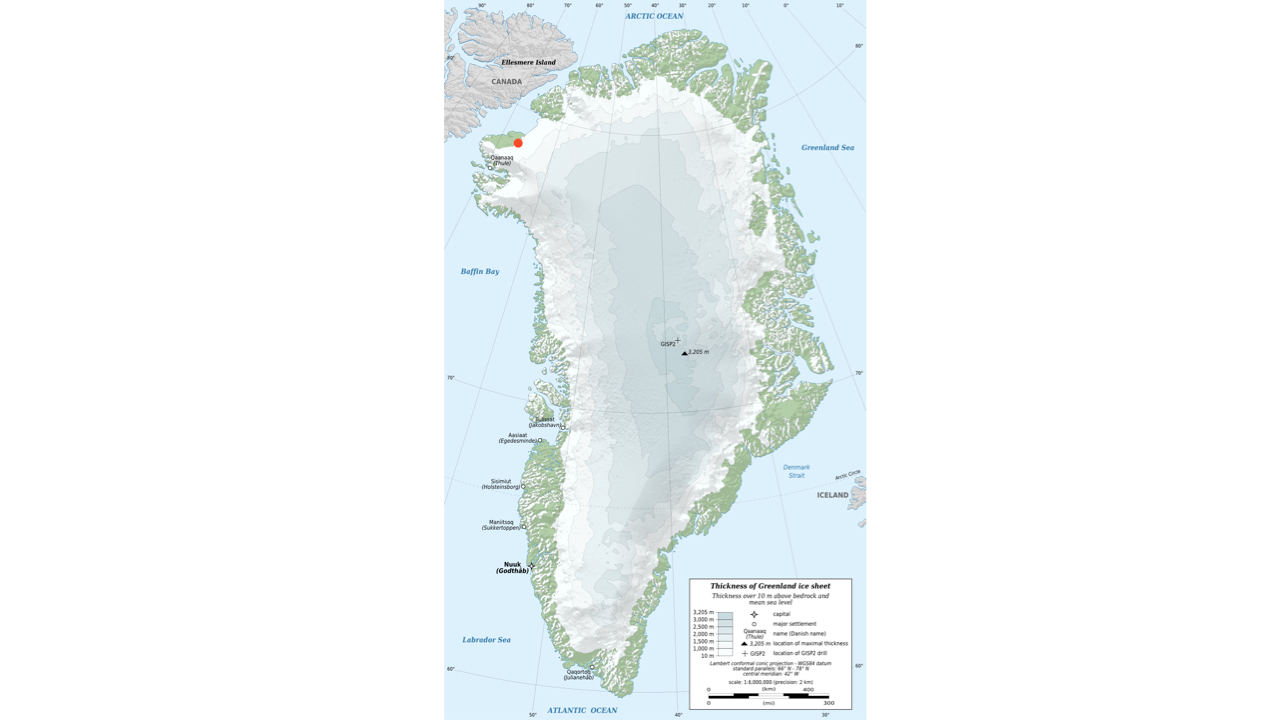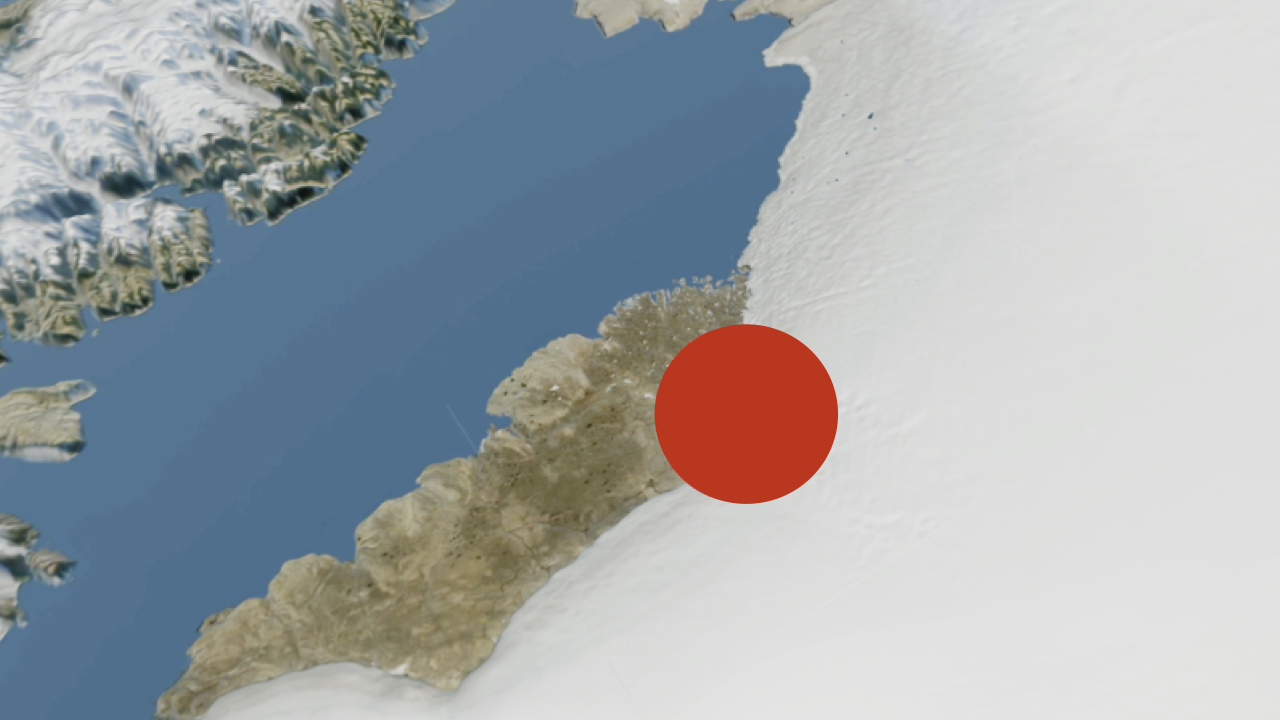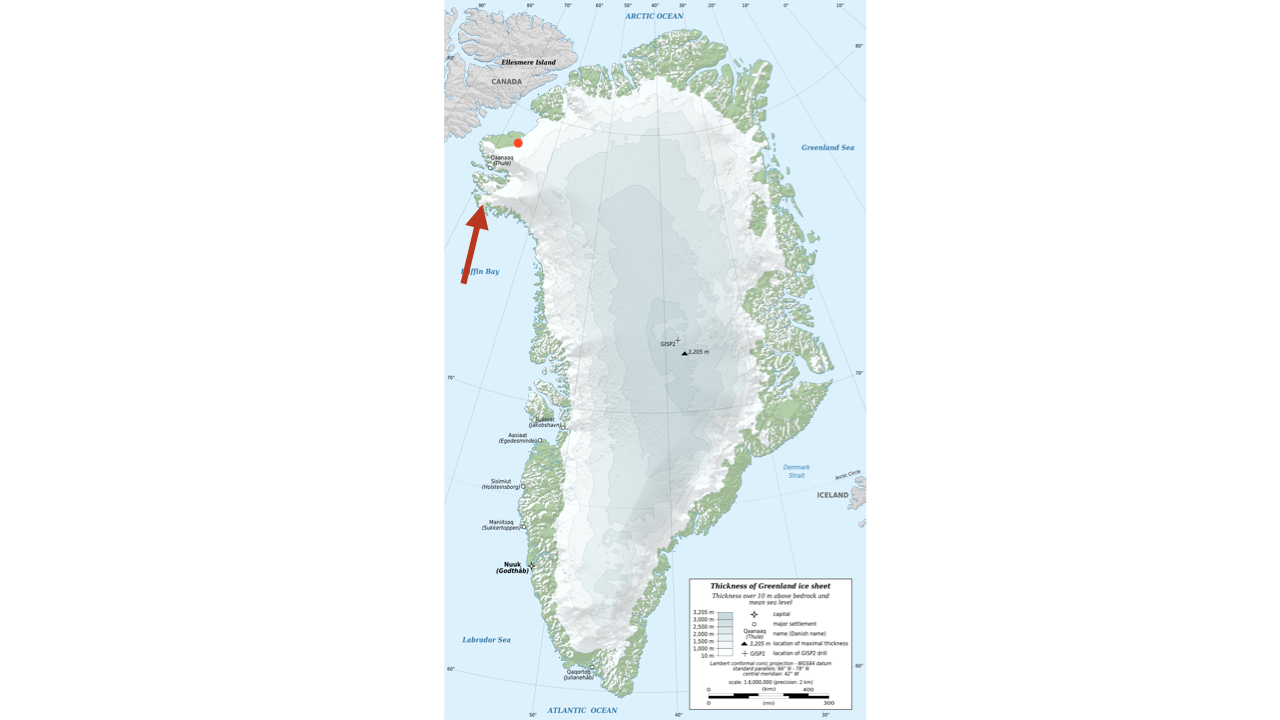Did a Giant Collider Help Give Us Extreme Climate Stability?
Floods and fires raged and boulders rained from the sky. Such a sci-fi-like scenario in Earth’s relatively recent past gave us, in part, the extreme climate stability that has allowed humans to flourish.
In my blog of two weeks ago,1 I explained how a recent reconstruction of temperature records from around the world reveal that the past 9,500 years of unprecedented climate stability at the optimal temperature for global high-technology civilization was actually twice as stable as what scientists had previously concluded. In last week’s blog,2 I described how a breach in Lake Agassiz, a gigantic lake of glacial meltwater in central North America, sent a rush of cold, fresh water into the North Atlantic. This rush turned back the Atlantic Meridional Overturning Circulation (AMOC)—aka the Gulf Stream—and brought about a 1,200-year-long colossal global cooling event known as the Younger Dryas (see figure 1).

Figure 1: Younger Dryas cooling event. The temperature figures represent the surface air temperature in the central region of Greenland’s ice sheet. The blue curve shows the newly determined temperature record of the past 9,500 years. The purple curve shows the temperature record from 16,500–9,500 years ago derived from oxygen-18 isotope measures in ice cores drilled in the central region of Greenland’s ice sheet. The two dotted lines delineate the start and end times of the Younger Dryas event. Data credit for blue curve: Shaun A. Marcott et al. and Andy May; data credit for purple curve: United States Geological Survey; diagram credit: Hugh Ross
It is thanks to the rush of glacial meltwater into the North Atlantic and the Younger Dryas event that our present ice age cycle is so different from previous cycles. The radical difference, in part, explains why we have enjoyed such a long period of extreme climate stability.
While there is a consensus in the scientific community that glacial meltwater from Lake Agassiz into the North Atlantic played a major role in the Younger Dryas, as I noted in last week’s blog, vigorous debate continues. Scientists debate both the cause of the breach of Lake Agassiz that resulted in much of its water pouring through the Mackenzie and St. Lawrence Rivers into the North Atlantic and whether the breach alone explains the Younger Dryas.
In particular, researchers debate whether a major asteroidal collision event striking somewhere on the North American landmass was the ignitor of the Younger Dryas. Those affirming this view cite a platinum anomaly in the Greenland ice cores and iridium-rich magnetic grains, magnetic microspherules, and fullerenes with extraterrestrial helium in layers at Clovis (ancestors of indigenous people) sites across North America that all date to the start of the Younger Dryas.3 The naysayers claim that it would be nearly impossible for the calculated 15- to 20-kilometer diameter crater from such a major asteroidal collision event to escape scientists’ discovery. Given (1) the recency of the Younger Dryas event (12,900–11,700 years ago); (2) how diligently geologists have searched Earth and North America in particular for large craters; and (3) how rarely large asteroids and comets strike Earth,4 those in the negative camp say such an asteroid collision event is extremely unlikely.
Discovery of a Recent Large Impact Crater
Thanks to a discovery published on November 14 in Science Advances,5 the “nearly impossible” has been proven to have occurred. A team of 21 geologists and 1 zoologist-geneticist from Denmark, France, Germany, Switzerland, United Kingdom, Canada, and the USA announced finding an impact crater measuring 31.1±0.3 kilometers in diameter (see figures 2 and 3). The reason it remained hidden was that the crater lies as much as 930 meters (3,050 feet) below the Hiawatha Ice Field in northwestern Greenland (see figure 4).

Figure 2: Greenland Map Showing the Site of the Impactor
The red dot near the northwest coast of Greenland shows the location and size of the impact crater. Map credit: ETOPO1 Global Relief Model, National Centers for Environmental Information and Eric Gaba

Figure 3: Greenland Inset Map Showing Impactor Site and Size
The Hiawatha Ice Field is on the right. Canada’s Ellesmere Island is to the left. The red circle indicates the impact crater site and size. Map credit: ETOPO1 Global Relief Model, National Centers for Environmental Information and Eric Gaba

Figure 4: Impact Crater Site and Size Relative to the Edge of the Hiawatha Ice Field
Map credit: ETOPO1 Global Relief Model, National Centers for Environmental Information and Eric Gaba
Airborne ice-penetrating radar revealed a circular bedrock depression. The depression has an elevated rim, 320 meters (1,050 feet) above the crater floor, and a central uplift of 50 meters (164 feet) in height that is actively eroding—clear signs of an impact crater. In the sediment from the largest river draining the crater, the team found shocked quartz and other impact-related grains. Many of the shocked quartz grains showed evidence of toasting, “a brown coloration due to intense post-shock hydrothermal alteration of the shock lamellae.”6 Analysis of these grains and the shocked quartz indicates that the impactor was a fractionated iron asteroid. This analysis, combined with the size of the crater, establishes that the impactor was 1.5 kilometers in diameter.
The team crushed subsamples of the glaciofluvial sediments they had recovered in an agate mill (a crushing mill machine) and analyzed the crushed sediments for major and trace elements. Every subsample contained elevated concentrations of nickel, cobalt, chromium, gold, and platinum group elements—indicative of a rare “strongly fractionated Duchesne (type IVA) iron meteorite.”7
Date of the Hiawatha Impact Event
The team noted that they lack a definitive date for the Hiawatha Ice Field impact event. However, eight lines of evidence strongly suggest that it corresponds to the Younger Dryas cooling event:
- The team matched the Greenland ice core data with the radar stratigraphy maps of that part of the Hiawatha Ice Field that overlays the crater. They discerned a sequence of “cleaner ice” that represents the past 11,700 years and distinct from “visually dark and debris-rich ice” that represents the Younger Dryas cold period of 12,800 to 11,700 years ago.8 Specifically, the team matched the jumbled-up ice in the deep interior layers of the crater with debris-rich surface ice on the edge of the crater rim that was previously dated to 12,800 years ago.
- Within the crater structure, the radar stratigraphy maps revealed a lack of any “reflection-rich Bolling-Allerod ice (14.7 to 12.8 ka ago) from the period immediately before the Younger Dryas.”9
- The Hiawatha crater is the only known large impact crater that “still has a significant portion of its original surface topographic expression.”10 Thus, its age must be thousands, not hundreds of thousands or millions of years old.
- Based on present ice-flow speeds of the Hiawatha Ice Field at the crater site, “most impact ejecta deposited onto the ice sheet would have been transported to the ice margin within ~10 ka.”11 Thus, the present near-complete lack of impact ejecta on the ice sheet argues for an impact date older than 10,000 years ago.
- The crater rim height has been eroded from its calculated original height of 800 meters down to its present 320 meters. This feature allows a crater age determination based on a range of possible fluvial and subglacial erosion rates. The minimum age so determined is 5,000 years. The maximum age is 50,000 years. The team’s radar evidence of active subglacial erosion and active sediment deposition at the ice field front favors an age much closer to 5,000 than to 50,000 years.
- Detailed modeling of hydrothermal systems within Mars’ impact craters reveal that these systems have a life span of about 100,000 years for a 30-kilometer-wide impact crater.12For the Hiawatha impact crater, the overlying ice sheet would have provided an ample supply of water that would have exported heat much more efficiently than would be the case for a Martian analogue impact crater. Therefore, the present existence of hydrothermal systems in the Hiawatha impact crater argues for a crater age younger than 20,000 years.
- The crater bottom is exceptionally jagged, indicating that little erosion has occurred. The radar image mapping shows that the deep layers of ice in the crater are jumbled up, again a sign of a recent impact. The disturbed patterns in the ice in the interior of the crater demonstrate that the ice sheet over the crater has not yet equilibrated. The combination of the crater bottom morphology (form) and the features of the overlying ice indicate a likely age for the impact event ~10–15 thousand years ago.
- Given the size of the Hiawatha crater, the impactor must have generated a major, long-lasting global cooling event. The only such cooling event within the last 20,000 years is the Younger Dryas.
All these lines of evidence are consistent with the date of the Hiawatha impact event occurring at the same time as the start of Younger Dryas cooling event. As the team carefully noted in their paper, however, an accurate and definitive date for the impact event awaits drilling through the thick ice to the crater floor, to the rocks there that would have melted at impact and reset their radioactive clocks. Radioactive dates of a large number of such rocks will yield an accurate age of the Hiawatha impact event.
Consequences of the Hiawatha Impact Event
The strongest reason for attributing the cause of the Younger Dryas event to the Hiawatha impactor is that the expected consequences from the Hiawatha impactor explain all the features of the Younger Dryas. Given the size of the Hiawatha crater and the fact that the impactor was a 1.5-kilometer-diameter iron asteroid, the impact must have triggered a global cooling event.
The impact delivered enormous quantities of debris, dust, and water vapor into the atmosphere. This input into the atmosphere blocked much of the Sun’s radiation from reaching Earth’s surface for at least several months, if not years. In turn, northern hemisphere surface temperatures dropped by several degrees Celsius. Such a temperature drop, combined with the extra load of water vapor, would have caused more snow to build on Earth’s surface. This snow, being an efficient reflector of solar radiation, would have dropped surface temperatures even more.
Also, the impact destabilized Greenland’s ice fields and, at a minimum, would have melted at least 1,500 billion tons of ice. Meltwater pouring into the North Atlantic would have contributed to, but not be the dominant factor in,13 turning back the AMOC and, thereby, cooling all the landmasses adjoining the North Atlantic Ocean.
Huge rocks rained down upon the northern and mid-latitude parts of North America. For decades geologists have been mystified as to what blocked the outflow of Lake Agassiz into the Gulf of Mexico and caused a sudden rush of glacial meltwater from Lake Agassiz through the Mackenzie and St. Lawrence Rivers and into the North Atlantic at the beginning of the Younger Dryas. A rain of large rocks provides the means for such breaches.
In addition to changing the plumbing of the North Atlantic Ocean and North America, the Hiawatha impact event would have pelted North America and Europe with debris that would have ignited wildfires throughout both continents.14 While perhaps not totally responsible for the extinction of North America’s and Europe’s megafauna (large animals) and the demise of the North American Clovis (ancestors of indigenous people) culture that occurred at the beginning of and during the Younger Dryas as some have claimed,15 the Hiawatha impactor would have played the major role.
Not all the Greenland ice cores show evidence of a recent giant impact. Brown University planetary scientists Elizabeth Silber and Brandon Johnson explained why.16 Using models they had developed for impacts on the icy moons of Jupiter and Saturn, Silber and Johnson demonstrated that for an impact on thick ice, the ice suppresses the spread of debris. This suppression implies that it was the colder temperatures throughout the Younger Dryas more than the rain of debris that was responsible for the European and American megafaunal extinctions and the demise of the Clovis culture.
The Hiawatha impact site is only 170 miles north of Cape York (see figure 5). Like the Hiawatha impactor, the Cape York meteorite fragments are predominantly iron and nickel in their composition. The differences in trace element composition between the Cape York meteorite fragments and the deduced average composition of the Hiawatha impactor are easily explained by the differentiation that would have existed in a 1.5-kilometer-diameter strongly fractionated Duchesne (type IVA) asteroid. If, as seems likely, the Cape York meteorite fragments are part of the Hiawatha impactor, then the case for the Hiawatha impactor being the cause of the Younger Dryas is strengthened even more.

Figure 5: Site of the Cape York Iron Meteorite Finds Relative to the Hiawatha Impact Site
Arrow marks the site of the Cape York meteorite finds. Red dot marks the site of the Hiawatha impactor. Map credit: ETOPO1 Global Relief Model, National Centers for Environmental Information and Eric Gaba
Without the Hiawatha impactor, there would either be no Younger Dryas cooling event at all or its cooling effect on the global mean climate would have been just a tiny fraction of what it was. Either way, we humans would have lost out on the amazing past, present, and future blessings that the Younger Dryas has brought and will bring to us. The list of these blessings is so long and so wonderful that I will devote an entire blog to describing and explaining them, appropriately in my post for Christmas Eve.
Featured image: A Tidewater Glacier in Western Greenland
Image credit: NASA/JPL-Caltech/Eric Rignot
Check out more from Reasons to Believe @Reasons.org
Endnotes
- Hugh Ross, “Present Climate Epoch Has Been Extremely Stable,” Today’s New Reason to Believe (blog), Reasons to Believe, December 3, 2018, https://www.reasons.org/explore/blogs/todays-new-reason-to-believe/read/todays-new-reason-to-believe/2018/12/03/present-climate-epoch-has-been-extremely-stable.
- Hugh Ross, “How Did Earth Get Its Long-Standing Stable Climate?” Today’s New Reason to Believe (blog), Reasons to Believe, December 10, 2018, https://www.reasons.org/explore/blogs/todays-new-reason-to-believe/read/todays-new-reason-to-believe/2018/12/10/how-did-earth-get-its-long-standing-stable-climate.
- R. B. Firestone et al., “Evidence for an Extraterrestrial Impact 12,900 Years Ago That Contributed to the Megafaunal Extinctions and the Younger Dryas Cooling,” Proceedings of the National Academy of Sciences, USA 104 (October 9, 2007): 16016–21, doi:10.1073/pnas.0706977104; Michail I. Petaev et al., “Large Pt Anomaly in the Greenland Ice Core Points to a Cataclysm at the Onset of the Younger Dryas,” Proceedings of the National Academy of Sciences, USA 110 (August 6, 2013): 12917–20, doi:10.1073/pnas.1303924110; Michail I. Petaev et al., “Reply to Boslough: Is Greenland Pt Anomaly Global or Local?” Proceedings of the National Academy of Sciences, USA 110 (December 24, 2013): E5036, doi:10.1073/pnas.1320772111.
- Mark Boslough, “Greenland Pt Anomaly May Point to Noncataclysmic Cape York Meteorite Entry,” Proceedings of the National Academy of Sciences, USA 110 (December 24, 2013): EW5035, doi:10.1073/pnas.1320328111; Tyrone L. Daulton et al., “Comprehensive Analysis of Nanodiamond Evidence Relating to the Younger Dryas Impact Hypothesis,” Journal of Quaternary Science 32 (January 2017): 7–34, doi:10.1002/jqs.2892; Andrew C. Scott et al., “Interpreting Paleofire Evidence from Fluvial Sediments: A Case Study from Santa Rosa Island, California, with Implications for the Younger Dryas Impact Hypothesis,” Journal of Quaternary Science 32 (January 2017): 35–47, doi:10.1002/jqs.2914.
- Kurt H. Kjær et al., “A Large Impact Crater beneath Hiawatha Glacier in Northwest Greenland,” Science Advances 4 (November 14, 2018): eaar8173, doi:10.1126/sciadv.aae8173.
- Kjær et al., “A Large Impact Crater,” p. 3.
- Kjær et al., “A Large Impact Crater,” p. 6.
- Kjær et al., “A Large Impact Crater,” p. 6.
- Kjær et al., “A Large Impact Crater,” p. 6.
- Kjær et al., “A Large Impact Crater,” p. 8.
- Kjær et al., “A Large Impact Crater,” p. 8.
- Oleg Abramov and David A. Kring, “Impact-Induced Hydrothermal Activity on Early Mars,” Journal of Geophysical Research 110 (November 2005): E12S09, doi:10.1029/2005JE002453.
- Lloyd D. Keigwin et al., “Deglacial Floods in the Beaufort Sea Preceded Younger Dryas Cooling,” Nature Geoscience 11 (July 9, 2018): 599–604, doi:10.1038/s41561-018-0169-6.
- R. B. Firestone et al., “Evidence for an Extraterrestrial Impact 12,900 Years Ago that Contributed to the Megafaunal Extinctions and the Younger Dryas Cooling,” Proceedings of the National Academy of Sciences, USA 104 (October 9, 2007): 16016–21, doi:10.1073/pnas.0706977104.
- Firestone et al., “Evidence for an Extraterrestrial Impact.”
- Elizabeth A. Silber and Brandon C. Johnson, “Impact Crater Morphology and the Structure of Europa’s Ice Shell,” Journal of Geophysical Research Planets 122 (December 2017): doi:10.1102/2017JE005456.



